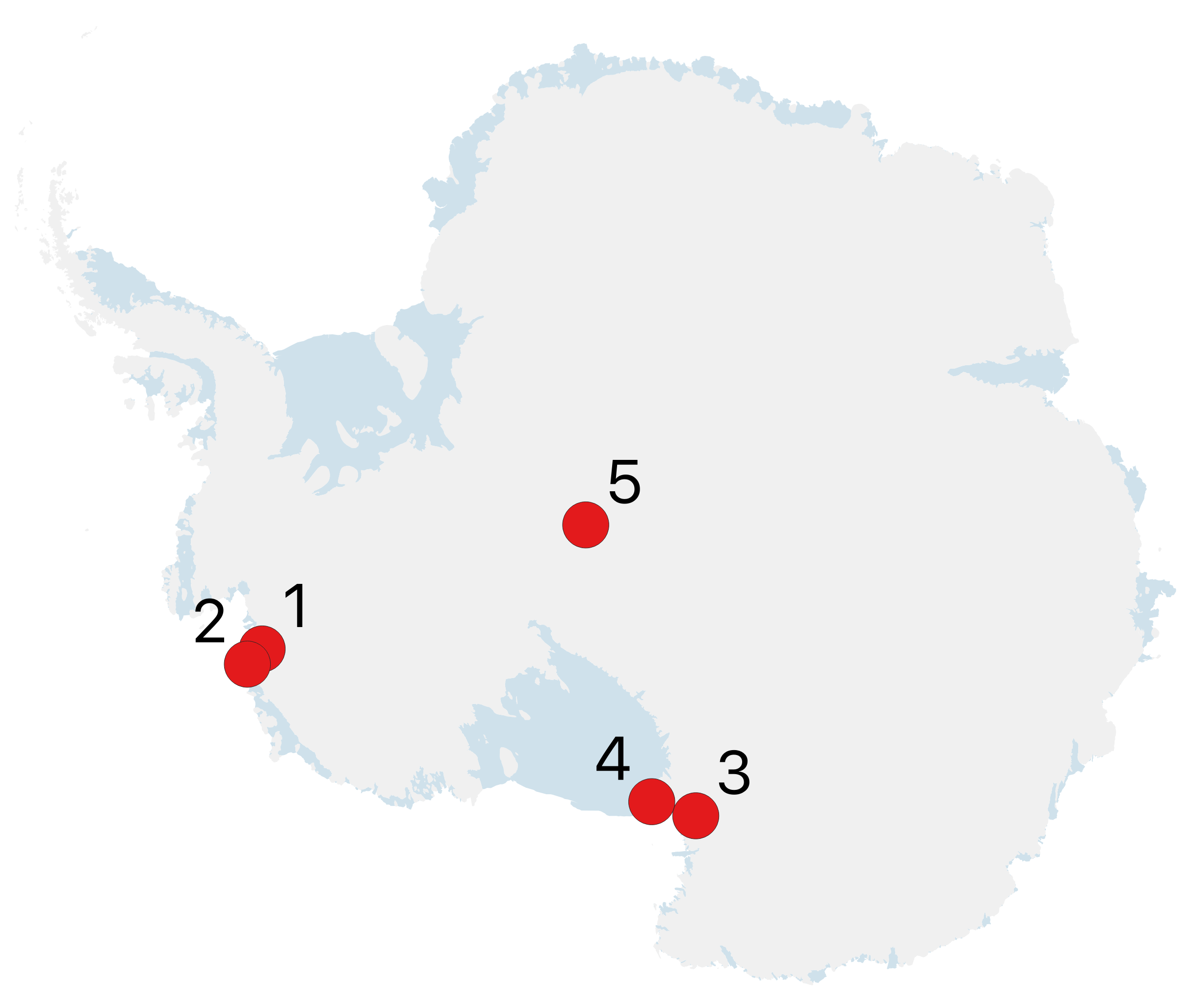IDP is providing support to the following projects during the 2019-2020 Antarctic field season:
(1) The Geological History Constraints on the Magnitude of Grounding Line Retreat in the Thwaites Glacier System project (PIs Goehring, Balco, Hall, Campbell; C-443-M; NSF award 1738989) contributes to the joint initiative launched by the U.S. National Science Foundation (NSF) and the U.K. Natural Environment Research Council (NERC) to substantially improve decadal and longer-term projections of ice loss and sea-level rise originating from Thwaites Glacier in West Antarctica. The goal of the project is to obtain geological evidence from the Thwaites-Pine Island Glacier system that will show whether glaciers were less extensive than they are at present, and, if so, when. The project will utilize the Badger-Eclipse Drill and Winkie Drill to obtain subglacial bedrock from sites where ice thickness is dynamically linked to grounding-line position in the Thwaites system (specifically in the Hudson Mountains). Observation of significant cosmogenic-nuclide concentrations in these samples would provide direct, unambiguous evidence for past episodes of thinning linked to grounding-line retreat as well as constraints on their timing and duration.
(2) The Thwaites-Amundsen Regional Survey and Network (TARSAN) integrating atmosphere-ice-ocean processes affecting the sub-ice- shelf environment project (PI Pettit; C-445-M/N; NSF award 1738992) contributes to the joint initiative launched by the U.S. National Science Foundation (NSF) and the U.K. Natural Environment Research Council (NERC) to substantially improve decadal and longer-term projections of ice loss and sea-level rise originating from Thwaites Glacier in West Antarctica. Thwaites and neighboring glaciers in the Amundsen Sea Embayment are rapidly losing mass in response to recent warming and related changes in ocean circulation. The processes driving the loss appear to be warmer ocean circulation and changes in the width and flow speed of the glacier, but a better understanding of these changes is needed to refine predictions of how the glacier will evolve. One highly sensitive process is the transitional flow of glacier ice from land onto the ocean to become a floating ice shelf. This flow of ice from grounded to floating is affected by changes in air temperature and snowfall at the surface; the speed and thickness of ice feeding it from upstream; and the ocean temperature, salinity, bathymetry, and currents that the ice flows into. The project team will gather new measurements of each of these local environmental conditions so that it can better predict how future changes in air, ocean, or the ice will affect the loss of ice to the ocean in this region. The project will use a 400-meter winch with tower and sheave from the 4-Inch Drill as an instrument installation winch to lower instruments into hot water-drilled boreholes on the Dotson Ice Shelf to measure ocean water properties at locations where warm Circumpolar Deep Water reaches the Thwaites grounding line.
(3) The Collaborative Research: Snapshots of Early and mid-Pleistocene Climate and Atmospheric Composition from the Allan Hills Blue Ice Area project (PIs Higgins, Brook, Severinghaus, Mayewski; I-165-M; NSF award 1744993, 1745006, 1744832 and 1745007) will collect new ice cores from the Allan Hills Blue Ice Area. Bubbles of ancient air trapped in ice cores have been used to directly reconstruct atmospheric composition, and its links to Antarctic and global climate, over the last 800,000 years. Previous field expeditions to the Allan Hills Blue Ice Area, Antarctica, have recovered ice cores that extend as far back as 2.7 million years. These ice cores extend direct observations of atmospheric carbon dioxide and methane concentrations and indirect records of Antarctic climate into a period of Earth’s climate history that represents a plausible geologic analogue to future anthropogenic climate change. Through this project, the team will return to the Allan Hills Blue Ice Area to recover additional ice cores that date to 2 million years or older. The new Foro 400 Drill and Blue Ice Drill will be used to recover the ice cores. The climate records developed from these ice cores will provide new insights into the chemical composition of the atmosphere and Antarctic climate during times of comparable or even greater warmth than the present day.
(4) The Phase 2 Development of a Rapid Access Ice Drilling (RAID) Platform for Research in Antarctica project (PI Goodge; D-551-M, D-552-M; NSF award 1419935) will initiate its third Antarctic Field Trial (AFT3) of the RAID drill system – to collect ice and rock samples from a deep ice sheet near Minna Bluff. The RAID drilling system will be put through a complete set of drilling trials, including augering firn, setting a borehole packer, drilling about 600 meters of grounded ice, and obtain samples of ice and rock cores at depth (by wireline rotary coring). All components of the drilling system will be tested and evaluated. The 4-Inch Drill will be used to make 2-3 meters of smooth-walled borehole just below the firn-ice transition, at a depth of approximately 70 meters, to field test the setting of the borehole packer. The Intermediate Depth Logging Winch will be used to field test a borehole dust logger in selected boreholes produced this season at Minna Bluff.
(5) The Management and Operations of the IceCube Neutrino Observatory 2016-2021 project (PIs Halzen and Hanson; A-333-S; NSF award 1600823) will utilize the Intermediate Depth Logging Winch to lower a series of optical+UV and radio sensor packages into the South Pole Ice Core (SPICEcore) borehole to the full depth of the hole (1751 m). The science goals include measurements of the radio absorption length of the ice from 100-1000MHz, radio birefringence in the ice, and ice index of refraction, all measured as a function of depth and ice temperature. The science team is interested in the optical scattering, absorption lengths, and luminescence as a function of depth and optical wavelength from the visible into the ultraviolet.





